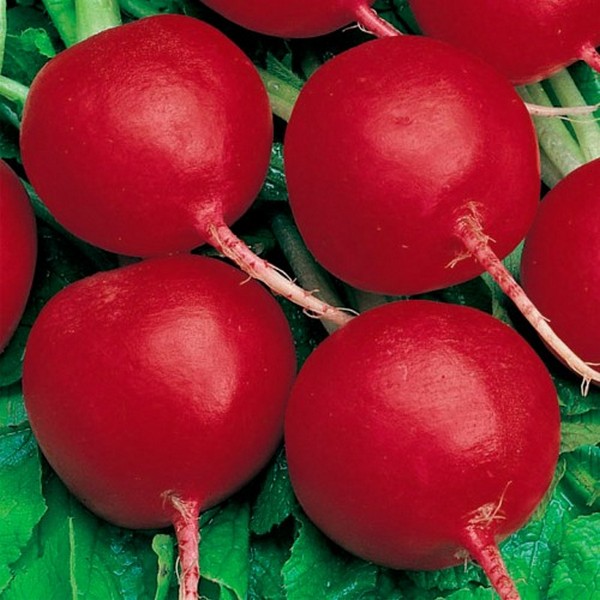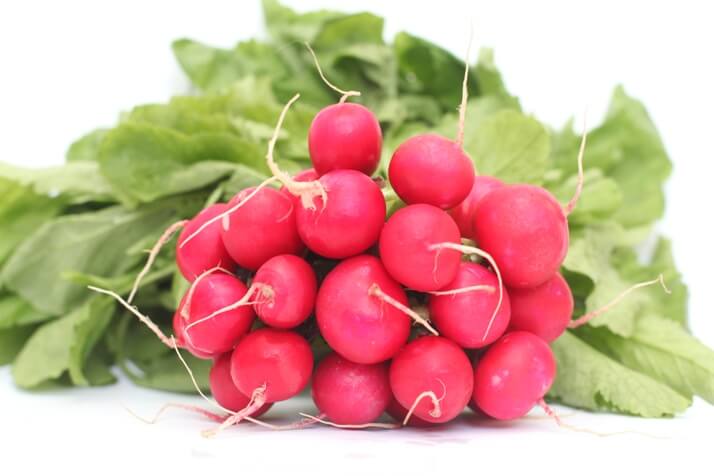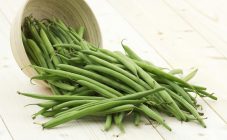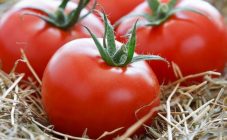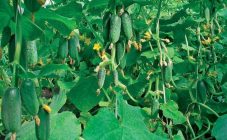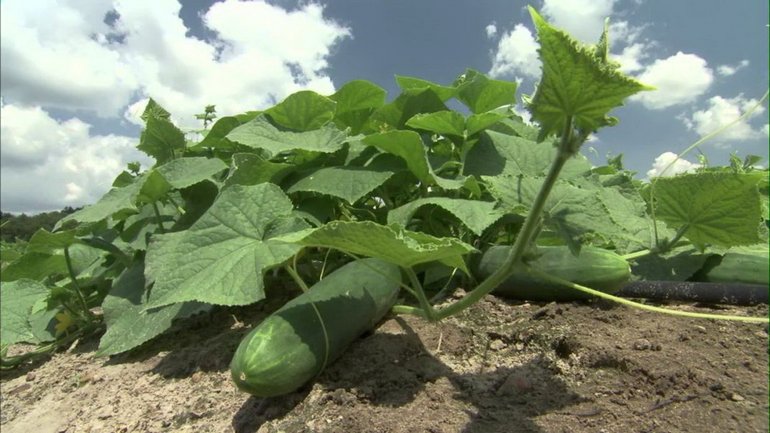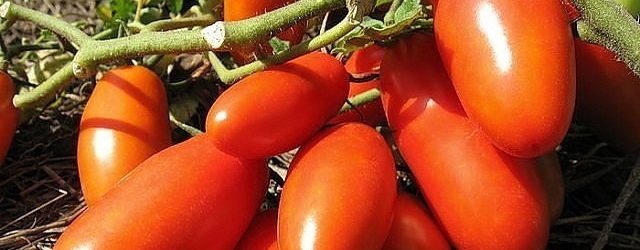Content:
Radish, or in common people, radish, belongs to the Cabbage family, the Radish genus. This is a vegetable, the root crop of which is consumed mainly fresh. The product is low in calories, contains isothiocyanates and serves as a source of the first vitamins in the spring. Radish root (from Lat. Radix) can have various shapes (cylindrical, spherical, conical, etc.) and colors from white to deep burgundy (purple). Breeders have bred many varieties for indoor and outdoor with different characteristics.
Seed selection
Correctly selected radish seeds are the key to a good harvest. When buying, it is worth giving preference to seed not older than 2-3 years. The seeds must be:
- Clean. Free of foreign weeds and debris.
- Matured. Ripe sunflower seeds are brown.
- Calibrated. One size.
- Elastic. Dense structure with a waxy sheen.
- No signs of bacterial damage (mold, rot, deformities).
On sale there are ordinary and pelleted or inlaid seeds in a special shell of growth stimulants. The first ones need pre-planting preparation (soaking, pickling), the second ones do not.
The shell not only contains a supply of nutrients, but also protects the seeds from germination and disease.
Pay attention to the labeling of the packages:
- In which regions the variety is zoned.
- Radish is recommended for growing in open or closed ground.
Radish varieties for open ground
In the climatic conditions of central Russia, radish sowing in open ground is carried out in April. For example, in the Moscow region, it is recommended to cover such plantings with covering material due to the likelihood of a sharp drop in temperature. In the south, sowing is carried out in early to mid-March.
It should be remembered that radish is a plant with a short 12-13 hour daylight hours. Lack or excess of light leads to overgrowth of tops, shooing and cessation of growth of the edible part of the root crop.
The best varieties of radish for open ground:
- French breakfast - early maturing variety of domestic selection. Recommended for growing in all regions of the Russian Federation. From the appearance of the first shoots to harvest - about 3-3.5 weeks. Root crops, weighing 15-18 grams, are elongated-cylindrical. The skin of the radish is raspberry pink, the tip is white. The variety is resistant to shooting and temperature extremes. Excellent taste.
- 18 days - ultra-early variety, bred in the Russian Federation. Harvesting - 2.5-3 weeks after the first shoots. It is cultivated everywhere in open and closed ground. Elongated blunt-pointed roots are pale pink at the surface with a white tip. Radish weight - 18-20 grams, circumference - up to 2 cm. Resistant to flowers, common diseases, can withstand frosts down to -2 ° C. With a lack of moisture, it can taste bitter.
- Heat - the variety was registered in 1956. From germination to maturation of root crops - about 3 weeks. Radish shape is elongated spherical, color is red. The variety is especially popular in the North-West of Russia, in the Leningrad and neighboring regions. Belarus and the Baltic republics are actively growing this type of radish.
- Early red - from entries to harvest 3-3.5 weeks. Radish Early red is a time-tested early variety bred in the USSR in 1978. Differs in spherical red root crops, weighing up to 25-30 grams. Not picky about soils, resistant to shooting.
- Mercado - mid-season variety, from the first shoots to ripening - about a month. Cold-resistant, resistant to blooming and cracking. Rounded pink roots reach a mass of 20-30 grams. The radish has a juicy white flesh. Excellent taste without tart bitterness.
- Rose red with white tipm - early ripening radish (3-4 weeks) of domestic selection (1940). The root crop is rounded-oval, up to 4-5 cm in length and 3.5-4 cm in diameter. The color of the radish corresponds to the name, the pulp is with a pink tint. The taste is sweetish, the pungency is poorly perceptible. The variety is prone to shooting.
- Red Giant (radicula ‘krasniy velikan) - registered in the State Register of Breeding Achievements in 1958. Radish Red giant, or Red Giant radish, refers to large varieties of medium or medium-late ripening, 1-1.5 months before harvest. The mass of large reddish root crops can reach 80-100 (300) grams, length - up to 15-18 cm. The yield is high - 3-4 kg from 1 m² of plantings. It is recommended to sow this radish outdoors in the Volga region, the Far East, in the Central and North Caucasus regions.
- Ruby - an early ripe variety, bred in Ukraine, registered in 1947. It is zoned throughout the territory of the Russian Federation, but it is most successfully grown in the open ground of the south of Russia: Volgograd, Rostov, Saratov regions. Root crops are rounded red, reach technical ripeness (weight - up to 20-25 grams) in 3-3.5 weeks.
Growing radish in Siberia
The culture is cold-resistant. Radish seeds germinate at a temperature of + 2-3 ° C, which makes it possible to grow vegetables in the open field beyond the Urals, in Siberia, Primorye, Khabarovsk and Kamchatka.
Radish does not die with light short frosts, and some varieties can easily withstand a drop to -6 ° C, while the taste of the root crop does not deteriorate.
A distinctive feature of cultivation in the northern regions is the shift in sowing dates to early-mid-May, since the upper layers of the soil must thaw and warm up to a temperature of + 14-16 ° C.
Brief description of radish varieties released for cultivation in Siberia:
- Dawn - early ripening variety of domestic selection (1971). From the first shoots to harvest in the open field - about a month. Root crops are dark red, 4-4.5 cm in diameter, flat-rounded, completely submerged in the ground, weight - up to 15-18 grams. Productivity - up to 1.5-2 kg per m² of plantings.
- Bullfinch - an ultra-early variety (ripening in 20 days), a stunted plant with a very compact rosette of leaves and round red roots (20-25 grams). Shows good resistance to shooting, cold-resistant and high-yielding.
- Zlata - an early variety of Czech selection (1998). A round radish of a sunny yellow color (about 20 grams) protrudes 1 / 3-1 / 4 above the surface of the earth. The variety is drought-resistant, practically does not shoot.
- Ilke - a variety of German selection (1995). Ilke radish belongs to mid-season varieties (ripening 4-5 weeks). The shape of the burgundy root crop is flat-rounded, weight - 15-20 grams. Less than other varieties, it is affected by the cruciferous flea.
- Polar bear - mid-season hybrid variety of domestic Siberian selection, large-fruited and cold-resistant. Root crops are rounded snow-white, from the first shoots to harvest - about 5-6 weeks.
All-season and late varieties
The most popular and promising varieties of radish for open ground are early and ultra-early, which allow you to get a harvest in a short time.
In the spring planting of radishes after harvesting the root crop, other vegetable crops are grown on the vacated ridge.
Early varieties of root crops are always modest in size.If the grower wants to grow large radishes, then varieties should be selected with medium and late ripening. They are characterized by high yields, are laid for long-term storage and tolerate transportation well.
All-season varieties are considered that are not prone to shooting under conditions of insufficient or excessive (over 14-15 hours) daylight hours. They can be planted not only in early spring, but also in summer and autumn.
Well established as all-season:
- Sora - Dutch radish, one of the best varieties for planting in the spring and summer. It is successfully cultivated by summer residents and farmers. Raspberry rounded root crops reach a mass of 20-25 grams, are not prone to cracking. The pulp remains juicy for a long time.
- Rebel - a variety of Dutch selection, drought-resistant. Designed for growing in summer and spring. Reaches technical ripeness in 3.5-4 weeks. Productivity - 3-4 kg per m² of the ridge. Root crops are very decorative, the scarlet poppy goes into a white tail. The taste is pronounced, harsh.
- Diego - early ripening hybrid variety of Dutch selection. Root crops are ready for harvesting 3 weeks after the first shoots appear. Resistant to diseases and flowers, unpretentious in care. Radishes are red, round, weighing from 20 to 40 grams. Productivity - up to 3 kg per m² of plantings.
- Sachs - early maturing (2-2.5 weeks) variety for open ground and greenhouses. The radish is bright red, round-drop-shaped, reaching a weight of 10-18 grams. Resistant to diseases and flea damage, but does not tolerate prolonged drought.
- All seasons - ultra early variety, ripening period - from 2.5 to 3 weeks. Resistant to flowers. Root crops are rounded, scarlet, with white dense pulp, weight - up to 20 grams. Grown from April to September in open and closed ground. Productivity - 2.8-3 kg per 1 m² of sown area.
Most of the all-season radish varieties are Dutch hybrids. In our country, the following varieties (F1) have been recognized: Poker, Celeste, Silva, Estared, Famox, Kaspar, Donar, Rudolph, Tarzan, Regge, Anabel.
The best late-ripening radish varieties for open ground:
- Ice icicle - large white roots, up to 16-18 cm in length, resemble in appearance snow icicles. Radish reaches technical ripeness 6-7 weeks after the first shoots appear.
- Autumn giant - reaches marketable maturity in 4-5 weeks. Root crops are milky, elongated-rounded shape. The mass of one vegetable is up to 120-180 grams.
- Russian size - red rounded roots can reach a mass of up to 300-400 grams and 8-10 cm in diameter. Ripening period - 5-6 weeks.
- Volcano - late-ripening radish variety, from planting to harvest - 7-9 weeks. Root crops are elongated, deep red. The weight of individual specimens reaches 250 grams. Differs in a long shelf life without loss of commercial qualities - 3-4 months. Productivity - up to 5 kg from 1 m² of the ridge.
Flowers of the same plant can self-pollinate each other, but cross-pollination is preferable. Leave at least 4-5 radishes for good seed.
Up to 80% of the sowing of radishes occurs in the spring, but with the correct selection of varieties, you can get a harvest of excellent quality radish in the open field from early spring to late autumn in any region of the country.
